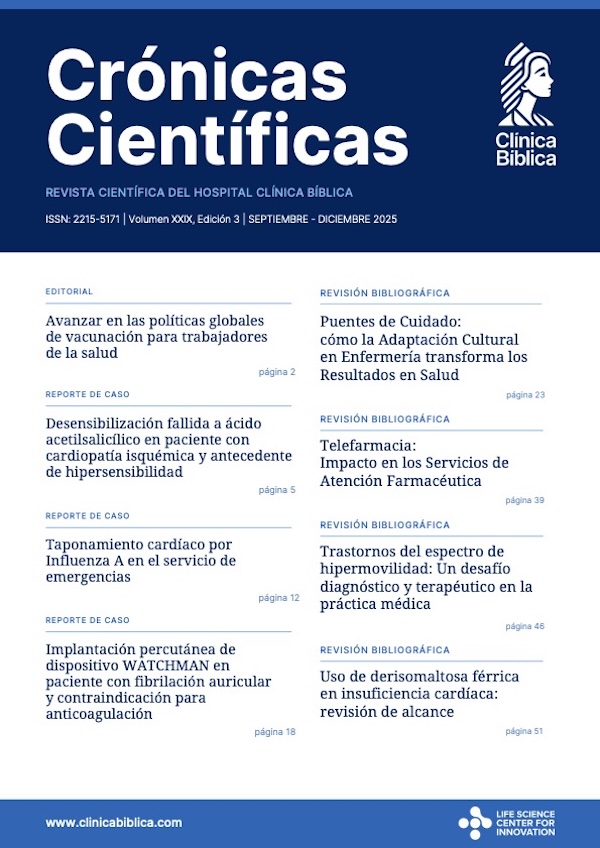- Visto: 1043
Revisión Bibliográfica
Esófago de Barret
Barrett´s Esophagus
Edición X Setiembre - Diciembre 2018
DOI: https://doi.org/10.55139/YVSA4046
APA (7ª edición)
Román-Mora, A. (2018). Esófago de Barret, Nuevas estrategias y nuevos tratamientos. Crónicas Científicas, 10(10), 6-15. https://doi.org/10.55139/YVSA4046.
Vancouver
Román-Mora A. Esófago de Barret, Nuevas estrategias y nuevos tratamientos. Cron cient, 20 de agosto 2018; 10(10): 6-15.
Dr Andrés Román Mora
Médico general del servicio de Urgencias del Hospital Clínica Bíblica, San José, Costa Rica.
Miembro del Colegio de Médicos y Cirujanos de Costa Rica.
Costa Rica.
Resumen
Estudios recientes sugieren que la prevalencia de la enfermedad por reflujo gastroesofágico (ERGE) está aumentando en el ámbito mundial. El propósito de este tema es revisar la definición y la epidemiología del esófago de Barrett (EB), los procedimientos de detección disponibles, la justificación y los métodos de vigilancia, y los tratamientos disponibles, incluidos los médicos, endoscópicos y quirúrgicos.
El esófago de Barrett (EB) es una patología adquirida producto del reflujo gastroesofágico crónico que provoca la lesión de la mucosa esofágica normal y su reemplazo por mucosa metaplásica. La importancia clínica del EB radica en que constituye un factor de riesgo para el desarrollo de adenocarcinoma esofágico (ACE).
Debido a que la incidencia de ACE se encuentra al alza, la mayoría de las sociedades de Gastroenterología han emitido sus propias recomendaciones para el tamizaje y la vigilancia. Han sido identificados factores específicos que incrementan el riesgo de EB y ACE. Actualmente el objetivo es detectar el cáncer en etapas iniciales y eventualmente tratables, para lo cual se han planteado distintos protocolos de vigilancia y numerosas alternativas de tratamiento del epitelio metaplásico del EB. La mayoría de las sociedades médicas recomiendan tamizar a todas las personas con ERGE, así como aquellos con otros factores de riesgo con endoscopia. Algunos biomarcadores han mostrado resultados prometedores, aunque se requieren de más estudios en el futuro. Las técnicas de erradicación endoscópica, incluyendo tanto la resección como la ablación, han mostrado buenos resultados, aunque variables, en el tratamiento de lesiones displásicas confinadas a la mucosa.
Palabras claves
Barrett, esófago, tamizaje, vigilancia, endoscopía, radioablación.
Abstract
Recent studies suggest that gastroesophageal reflux disease (GERD) is increasing in prevalence worldwide. The purpose of this theme is to review the definition and epidemiology of Barrett esophagus (BE), available screening modalities for detection, rationale and methods for surveillance, and available treatment modalities including medical, endoscopic, and surgical techniques.
Barrett’s esophagus is an acquired disease caused by chronic gastroesophageal reflux causing the injury of normal esophageal mucosa and its replacement by metaplastic mucosa. The clinical significance of BE is that it constitutes a risk factor for the development of esophageal adenocarcinoma.
Since the incidence of esophageal adenocarcinoma is on the rise, the major gastroenterology societies have come up with their recommendations for screening and surveillance. Specific factors have been identified as increasing the risk of BE and adenocarcinoma. Currently the goal is to detect cancer in early, treatable stages. Different protocols have been proposed, numerous alternatives for monitoring and treating metaplastic epithelium of BE. Most medical societies recommend screening people with GERD and other risk factors with endoscopy. Biomarkers have shown promising results, but more studies are needed in the future. Endoscopic eradication techniques, including both resection and ablation, have shown good but variable results for treating dysplastic lesions confined to the mucosa.
Keywords
Barrett, esophagus, screening, vigilance, endoscopy, radioablation.
Bibliografía
Boeckxstaens, G., El-Serag, H. B., Smout, A. J. et al. (2014). Symptomatic reflux disease: the present, the past and the future. Gut, 63(7), 1185–1193.
Chang, J. Y., Talley, N. J., Locke, G. R. et al. (2011). Population screening for Barrett esophagus: A prospective randomized pilot study. Mayo Clin Proc., 86, 1174-1180.
Desai, T. K., Krishnan, K., Samala, N., et al. (2012). The incidence of esophageal adenocarcinoma in non-dysplastic Barrett’s oesophagus: A meta-analysis. Gut., 61: 970-976.
El-Serag, H. B., Sweet, S., Winchester, C. C. et al. (2014). Update on the epidemiology of gastrooesophageal reflux disease: a systematic review. Gut, 63, 871–880.
Evans, J. A., Early, D. S., Fukami, N. et al. (2012). The role of endoscopy in Barrett's esophagus and other premalignant conditions of the esophagus. Gastrointest Endosc., 76, 1087-1094.
Ganz, R. A., Overholt, B. F., Sharma, V. K. et al. (2008). Circumferential ablation of Barrett's esophagus that contains high-grade dysplasia: A U. S. Multicenter Registry. Gastrointest Endosc., 68, 35-40.
Haidry, R.J., Dunn, J. M., Butt, M.A. et al. (2013). Radiofrequency ablation and endoscopic mucosal resection for dysplastic barrett's esophagus and early esophageal adenocarcinoma: Outcomes of the UK National Halo RFA Registry. Gastroenterology, 145, 87-95.
Hayeck, T. J., Kong, C. Y., Spechler, S. J., et al. (2010). The prevalence of Barrett’s esophagus in the US: Estimates from a simulation model confirmed by SEER data. Dis Esophagus, 23, 451-457.
Jemal, A., Bray, F., Center, M. M., et al. (2011). Global cancer statistics. Cancer J Clin, 61, 69-90.
Kastelein, F., Biermann, K., Steyerberg, E.W., et al. (2013). Aberrant p53 protein expression is associated with an increased risk of neo-plastic progression in patients with Barrett’s esophagus. Gut., 62,1676-1683.
Rex, D. K., Cummings, O. W., Shaw, M., et al. (2003). Screening for Barrett’s esophagus in colonoscopy patients with and without heartburn. Gastroenterology, 125, 1670-1677.
Rubenstein, J. H., Mattek, N., Eisen, G. (2010). Age- and sex-specific yield of Barrett's esophagus by endoscopy indication. Gastrointest Endosc, 71, 21–27. Shaheen, N. J., Overholt, B. F., Sampliner, R. E. et al. (2011). Durability of radiofrequency ablation in Barrett's esophagus with dysplasia. Gastroenterology, 141, 460-468.
Shaheen, N. J., Sharma, P., Overholt, B.F. et al. (2009). Radiofrequency ablation in Barrett's esophagus with dysplasia. New Engl J Med., 360, 2277-2288.
Singh, S., Sharma, A. N., Murad, M. H. et al. (2013). Central adiposity is associated with increased risk of esophageal in ammation, metaplasia, and adenocarcinoma: a systematic review and meta-analysis. Clin Gastroenterol Hepatol, 11, 1399–1412.
Ward, E. M., Wolfsen, H. C., Achem, S. R., et al. (2006). Barrett’s esophagus is common in older men and women undergoing screening colonoscopy regardless of reflux symptoms. Am J Gastroenterol., 101, 12-7.
APA (7ª edición)
Román-Mora, A. (2018). Esófago de Barret, Nuevas estrategias y nuevos tratamientos. Crónicas Científicas, 10(10), 6-15. https://doi.org/10.55139/YVSA4046.
Vancouver
Román-Mora A. Esófago de Barret, Nuevas estrategias y nuevos tratamientos. Cron cient, 20 de agosto 2018; 10(10): 6-15.
Esta obra está bajo una licencia internacional Creative Commons: Atribución-NoComercial-CompartirIgual 4.0 Internacional (CC BY-NC-SA 4.0)

Realizar búsqueda
Última Edición
Ediciones Anteriores






